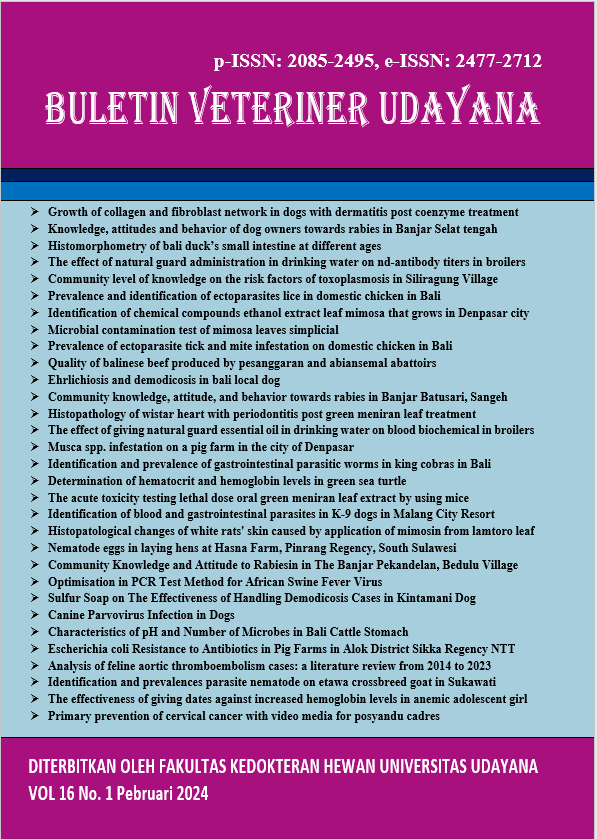CANINE PARVOVIRUS INFECTION IN DOGS: PATHOGENESIS, CLINICAL SYMPTOMS, DIAGNOSIS, PREVALENCE, THERAPY, AND VACCINATION
DOI:
https://doi.org/10.24843/bvu.v16i1.110Keywords:
Canine parvovirus, diagnosis, prevalenceAbstract
Canine parvovirus is a highly contagious disease in dogs that attacks the digestive tract. This disease is caused by canine parvovirus type 2 (CPV-2), belonging to the Parvoviridae family. This virus causes the highest mortality in dogs under six months of age. This virus has a very high mortality and morbidity rate, especially in dogs that have not been vaccinated. This literature review discusses the pathogenesis of CPV, the clinical symptoms that can be caused, how to diagnose, the prevalence of CPV cases, therapy, and vaccination to prevent transmission of canine parvovirus. The method used is literature study by collecting and summarizing references relevant to the topic. Based on this literature review, the results obtained include that canine parvovirus infection can occur directly or indirectly and CPV will show various clinical symptoms, namely the type of myocarditis and the type of enteritis. Common methods used to help confirm a diagnosis include anatomical pathology examinations and laboratory diagnostic examinations in the form of blood hematology examinations, test kits, Polymerase Chain Reaction (PCR), Fluorescent Antibody Technique (FAT), Enzyme Linked Immunosorbent Assay (ELISA). Based on the prevalence of CPV cases, it is known that CPV mostly attacks dogs aged 0-6 months. Therapy for CPV sufferers is only symptomatic and supportive. Vaccination is the main way to avoid CPV disease. It is hoped that more research on CPV will be carried out so that insight into CPV is easier to obtain and can become a lesson for the future.




